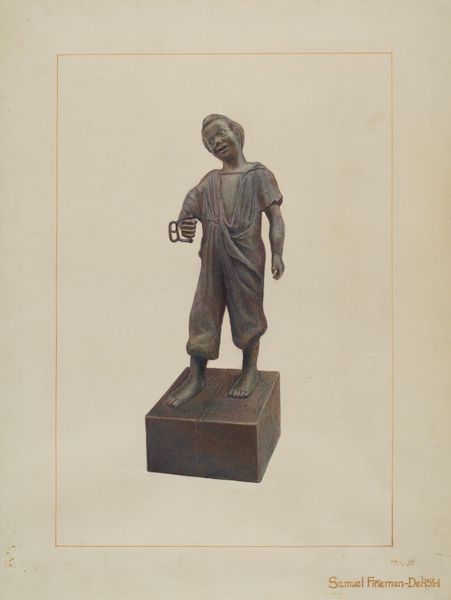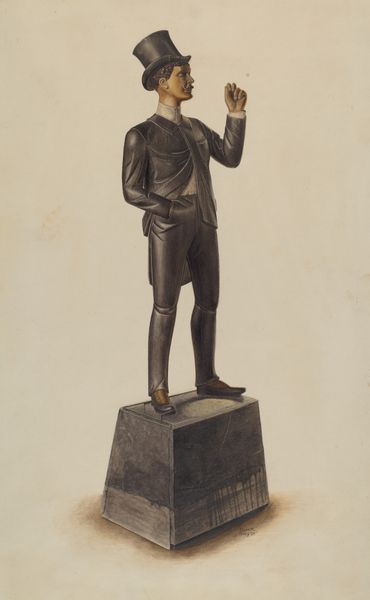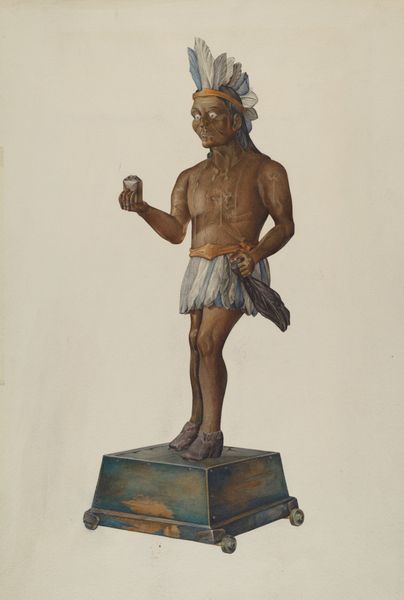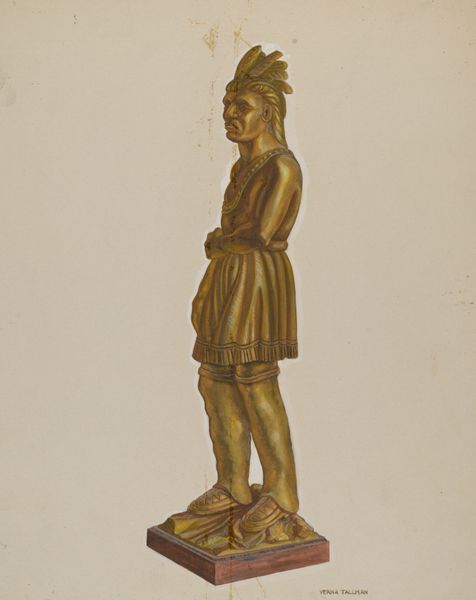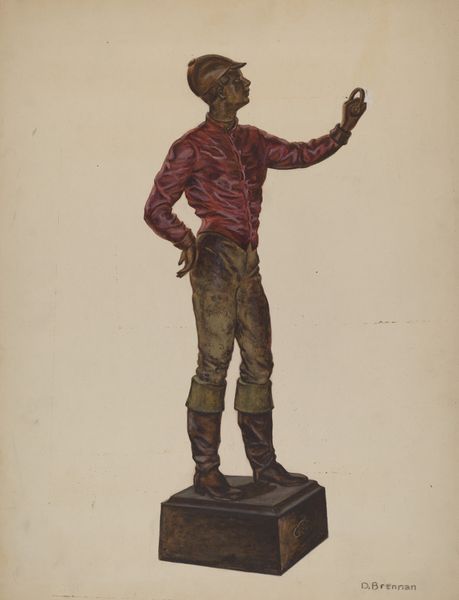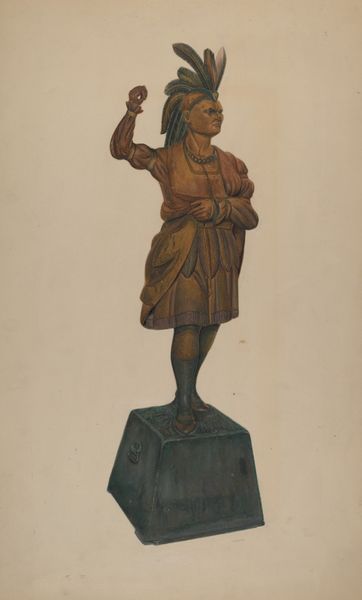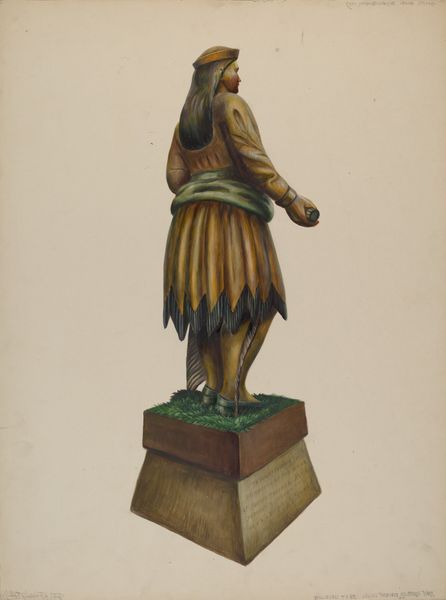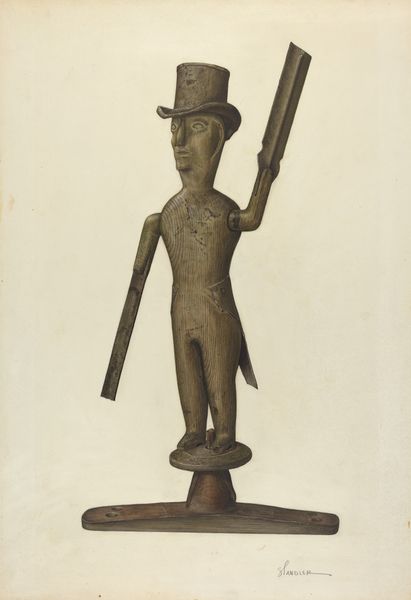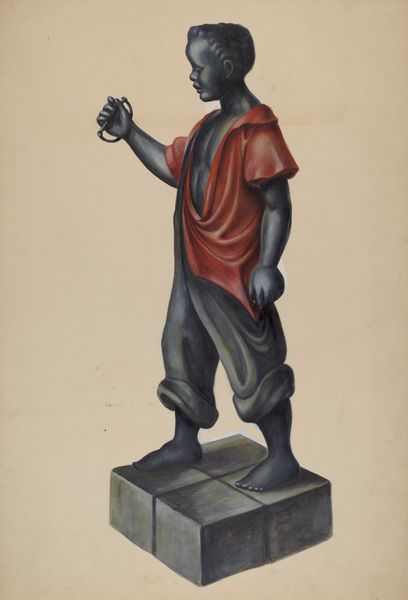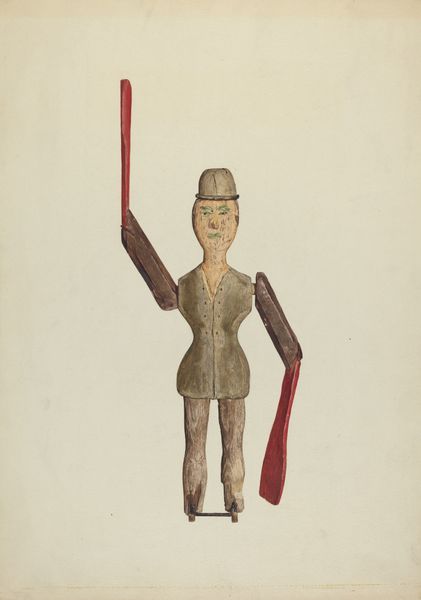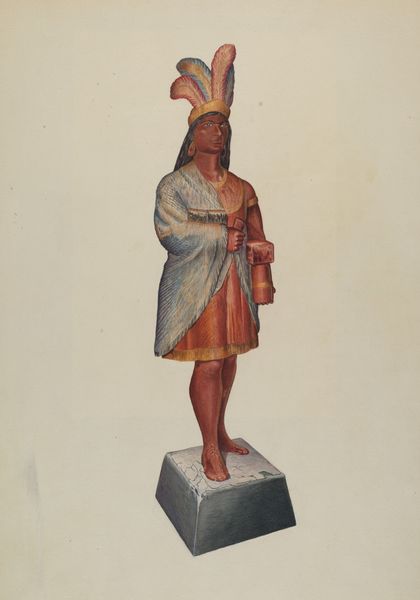
drawing, wood
#
portrait
#
drawing
#
folk-art
#
naïve-art
#
wood
#
portrait drawing
Dimensions: overall: 30.4 x 22.9 cm (11 15/16 x 9 in.)
Copyright: National Gallery of Art: CC0 1.0
Curator: I am immediately drawn to the figure's stoic pose and almost ghostly coloration; the wood's texture seems tangible, hinting at a story beyond the surface. Editor: Well, let's delve into that story. We are looking at "Medicine Man," a drawing Yolande Delasser created around 1937, done with graphite and watercolor on paper. Curator: Delasser chose very deliberate materials, graphite providing structure and watercolor allowing a limited range of subtle hues; why paper though, I wonder about that decision, rather than directly onto the carved form... Editor: That’s an interesting question! It likely stems from Delasser’s interest in documenting and celebrating American folk art. By creating a drawing, she was preserving this specific carved wood figure of a character, C.B. Sellers, within the art historical record, providing a portable representation suitable for distribution and appreciation beyond its immediate context. This choice effectively elevates the status of what may have originally been considered a purely functional or decorative object. Curator: True, the act of documentation and representation is key here. Look at how she mimics the rough textures of the wood with her strokes and rendering: her treatment makes me reflect on what these wooden caricatures were originally intended for. Were they truly considered "art," or did they merely serve as advertisements or populist effigies, devoid of institutional significance? Editor: They were certainly part of the vernacular landscape! Such folk sculptures were deeply embedded in local communities, expressing values and identities often marginalized by mainstream cultural narratives. Artists like Delasser, by drawing them, challenged the existing hierarchy of art by drawing attention to their cultural significance and the skill involved in crafting these figures, emphasizing the working-class roots of creativity. Curator: It highlights the tension between the artwork and its representation—drawing as labor reflecting on labor in woodworking and even advertising. This is no simple portrait; it’s an index of processes of creation and how folk art inserts itself in the social sphere! Editor: Absolutely. By focusing on a "medicine man," the image hints at themes of healing and well-being, but also perhaps skepticism and charlatanism, issues deeply relevant during the economic hardship of the 1930s, adding another layer to this seemingly straightforward portrait. Curator: It's really more than just a quaint rendering of American folk tradition, isn’t it? A complex distillation of the anxieties, beliefs, and aesthetic sensibilities during a pivotal point in US history. Editor: Exactly! And from an art-historical viewpoint, understanding pieces like this can change our entire framework of "American Art," placing marginalized voices into the story.
Comments
No comments
Be the first to comment and join the conversation on the ultimate creative platform.

